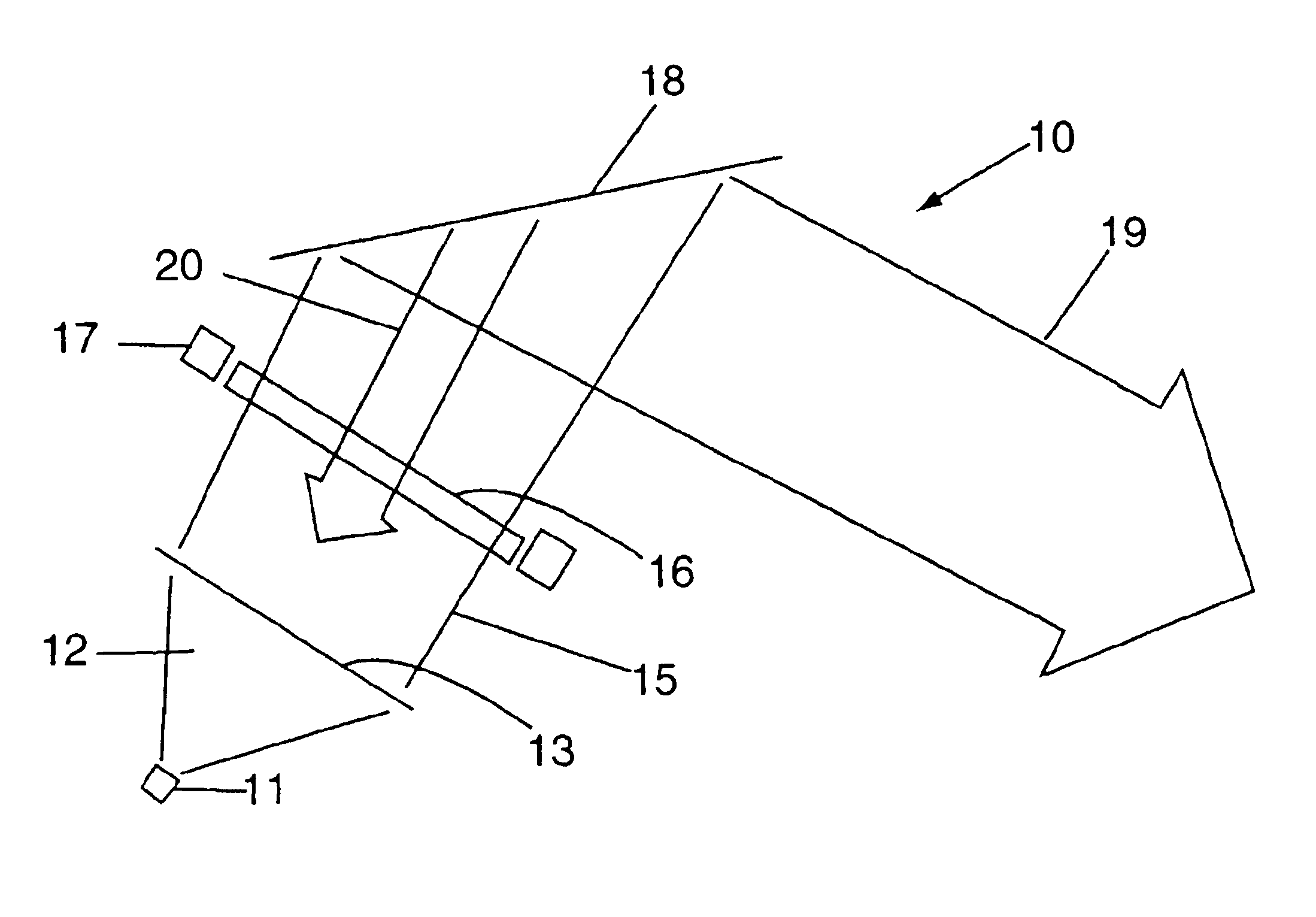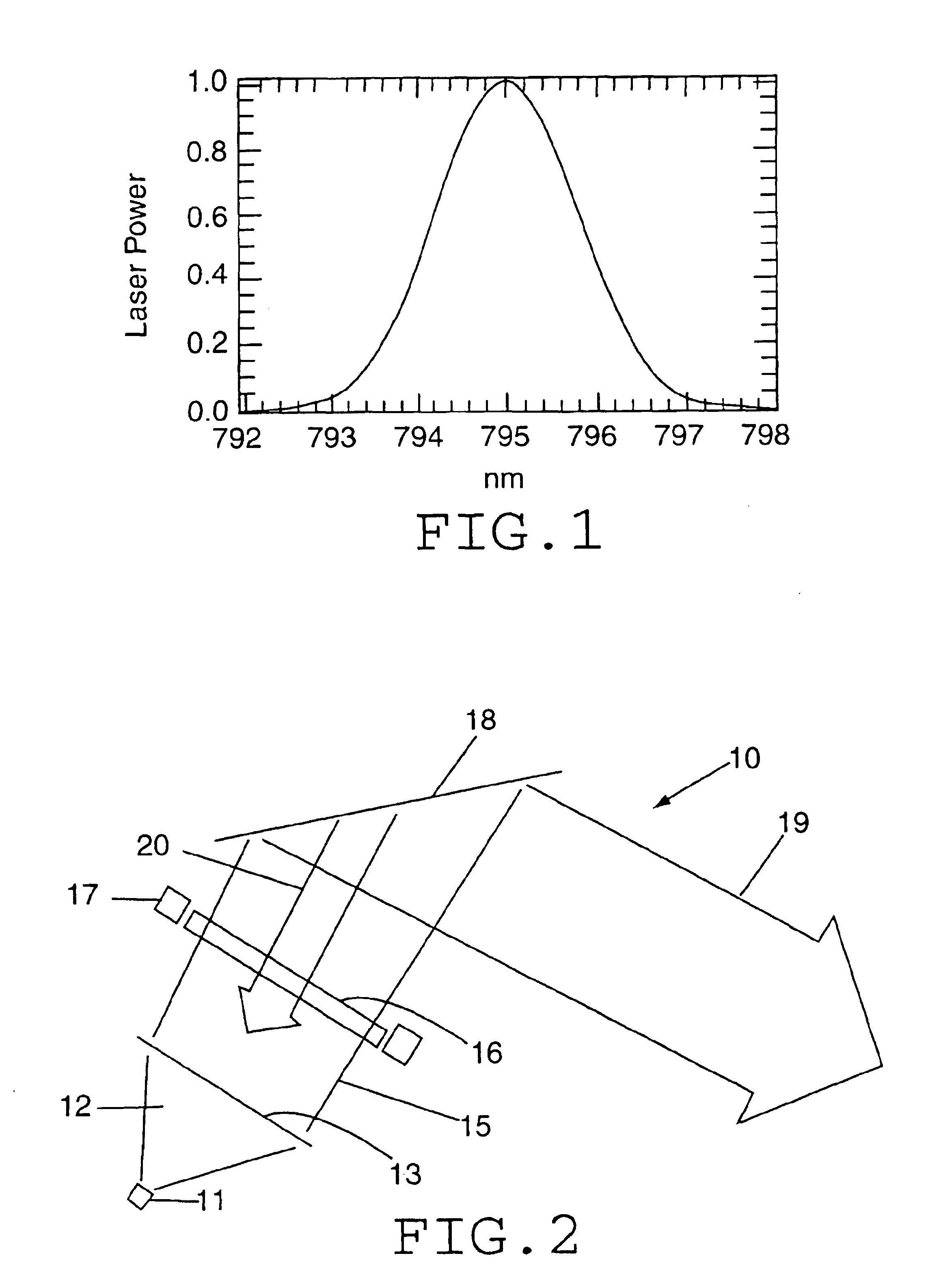Frequency-narrowed high power diode laser system with external cavity
a laser system and diode technology, applied in the field of diode lasers, can solve the problems of diode being destroyed and potential diode being destroyed, and achieve the effect of more usable output power and higher equivalent power
- Summary
- Abstract
- Description
- Claims
- Application Information
AI Technical Summary
Benefits of technology
Problems solved by technology
Method used
Image
Examples
Embodiment Construction
High power diode lasers, specifically, lasers with output powers greater than 1 watt, are much more expensive than low power diode lasers (generally, tens of milliwatts output power or less). For certain applications, however, the greater power output available from such high power lasers is essential. An example is in the production of laser-polarized noble gases for medical magnetic resonance imaging. However, the commercially available high power diode lasers provide their output power spread over a fairly wide spectral range, as illustrated in FIG. 1. In contrast to low power diode lasers, which have a single transverse mode, high power diode lasers have multiple transverse modes. Although the output laser spectrum of the high power laser may be centered at a particular wavelength (e.g., 795 nm as illustrated in FIG. 1), the output power may be spread over several nanometers, typically with a Gaussian distribution as shown in FIG. 1. For many applications, including the producti...
PUM
 Login to View More
Login to View More Abstract
Description
Claims
Application Information
 Login to View More
Login to View More - R&D
- Intellectual Property
- Life Sciences
- Materials
- Tech Scout
- Unparalleled Data Quality
- Higher Quality Content
- 60% Fewer Hallucinations
Browse by: Latest US Patents, China's latest patents, Technical Efficacy Thesaurus, Application Domain, Technology Topic, Popular Technical Reports.
© 2025 PatSnap. All rights reserved.Legal|Privacy policy|Modern Slavery Act Transparency Statement|Sitemap|About US| Contact US: help@patsnap.com



